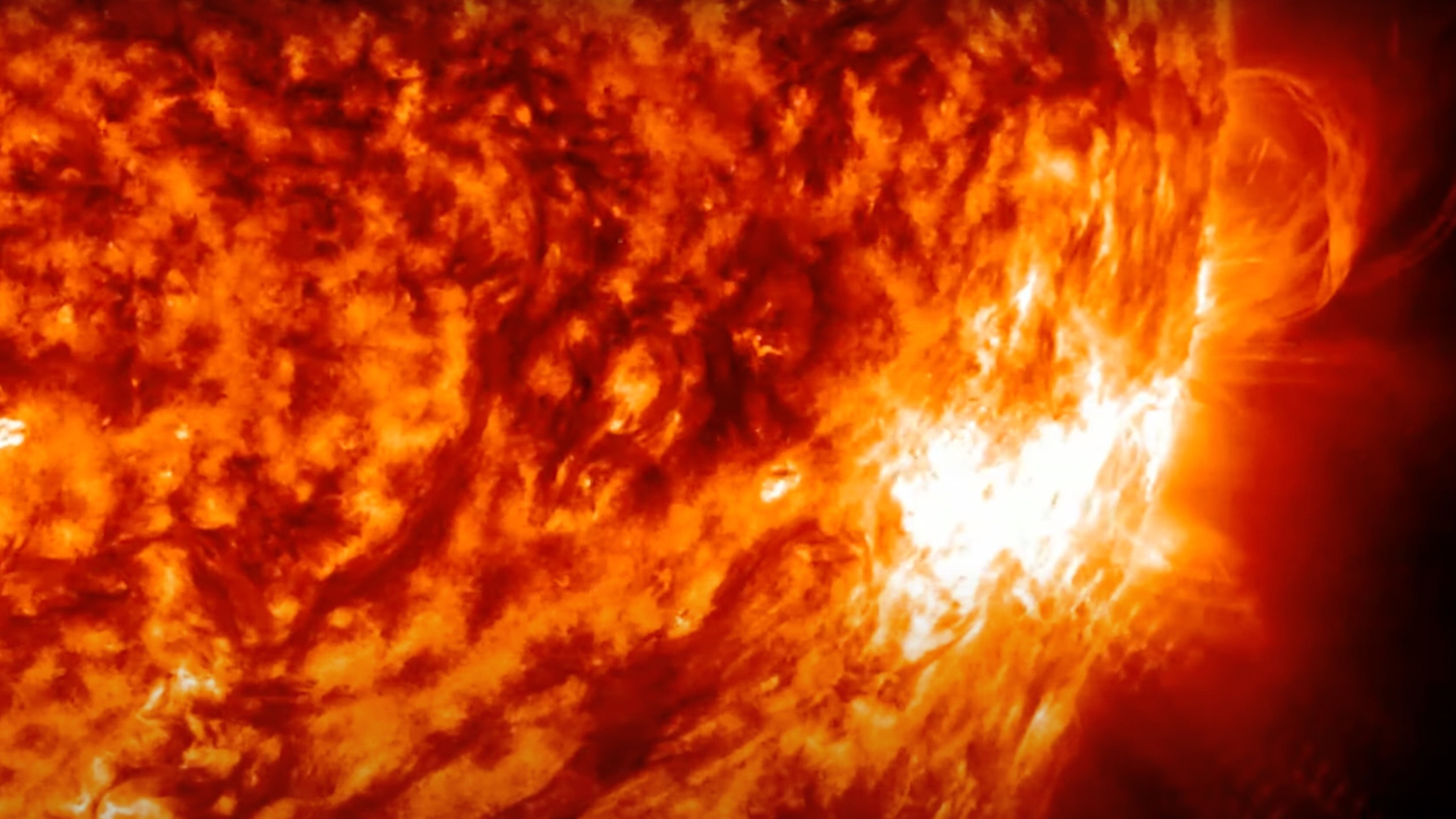A powerful X-class solar flare erupted from the Sun, causing radio blackouts across North and South America. The flare was released by an active sunspot, AR 3842, as it exited the Sun’s western limb. This intense burst of energy was second only to the record-setting X45 flare in 2003. While not as powerful, the X2.1 flare led to significant disruptions in shortwave radio communications. Scientists are analyzing the data to determine if the associated coronal mass ejection (CME) will impact Earth and its magnetic field. Such space weather events can affect satellites, power grids, and even produce stunning auroras. This blog post explores the causes, impacts, and the ongoing efforts to monitor and predict these powerful solar events.

Sunspot AR 3842 Unleashes Powerful X-Flare
The Sun’s active sunspot, AR 3842, has been the source of some intense solar activity in recent days. On Monday, October 7th, the sunspot fired off an impressive X2.1 solar flare as it exited the Sun’s western limb. This came just days after the same sunspot released the historic X9.05 flare, the most powerful solar outburst in seven years.
Solar flares are classified on a four-level scale, with B-class being the weakest and X-class representing the most intense bursts of energy. The X2.1 flare released a significant amount of ultraviolet radiation, leading to shortwave radio blackouts across the Americas and the Pacific Ocean. These disruptions can have significant impacts on communications, navigation, and other critical infrastructure. Fortunately, the flare was not as powerful as the record-setting X45 flare observed in 2003, but it still packed a considerable punch.
Monitoring Coronal Mass Ejections and Their Effects
In addition to the powerful X-flare, the eruption from AR 3842 also produced a coronal mass ejection (CME) – an impressive expulsion of magnetic field and plasma from the Sun’s outer atmosphere, or corona. CMEs can take a few days to reach Earth and interact with our planet’s magnetic field, potentially leading to geomagnetic storms and further disruptions.
Scientists at the U.S. National Oceanic and Atmospheric Administration (NOAA)’s Space Weather Prediction Center are closely analyzing the data to determine the speed and direction of the CME, as well as the potential impacts on Earth. These powerful bursts of energy can affect satellites, power grids, and even produce stunning auroras in the sky. Monitoring and predicting these space weather events is crucial for protecting critical infrastructure and ensuring the safety of astronauts and satellites.
Preparing for the Next Solar Storm
As the Sun continues its 11-year cycle of activity, the frequency and intensity of solar flares and CMEs are expected to increase. While these events are natural phenomena, their potential impacts on modern technology and infrastructure highlight the importance of ongoing research and preparation.
Scientists and space agencies around the world are working to better understand the Sun’s behavior and develop more accurate forecasting models. This includes improving the capabilities of coronagraphs, which are used to detect and track CMEs, as well as enhancing our understanding of the complex interactions between the Sun’s magnetic field and the Earth’s magnetosphere. By staying vigilant and proactively addressing the risks posed by space weather, we can mitigate the potential disruptions and harness the beauty of the Sun’s powerful displays, such as the stunning auroras they can produce.
